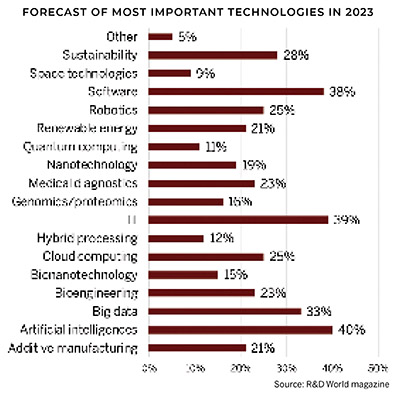One can almost see the future of R&D in current biopharmaceutical research labs: There are often no researchers in attendance. Yet the instrumentation is humming away, and automated loading and unloading systems are quietly and smoothly shuffling sample trays. Data is detected, collected and automatically loaded into digital files which are available immediately in real-time to remote researchers (in the same building or possibly even in another country).

On visits to these types of facilities, the only researchers visible are in meeting or lecture rooms. Even the primary investigator’s offices often are either empty or off site. These types of labs can and often do run at least two shifts; peak periods can see three shifts and personnel working weekends. Researchers can load samples and consumables on a Friday afternoon and collect results Sunday night or Monday morning from tests running unattended all weekend.
This setup was designed for evaluating large numbers of small biological or environmental samples. This process can also be evolved to test autonomous vehicles on a test track, the charge and discharge cycles of electrified vehicles, rates of environmental exposure-related degradation, and photovoltaic operation and life tests. The next level of testing and experimentation of physical samples is also underway in the creation of software-based physical modeling systems which are getting ever closer to real-life physical testing.
The 2020 Global R&D Funding Forecast queried readers about what they saw as the technologies likely to be important three years from now (2023). The only technologies with a small number of responses (space technologies (9%), quantum computing (11%), hybrid processing (12%) and bionanotechnology (15%) are those in the early stages of development or in narrow fields of high complexity.
Major technologies seen as rising in importance include artificial intelligence (AI), 40%, and information technology (IT), 39%. These areas have both garnered large responses in multiple surveys over the past several years. AI development is still within its early formative stages. Today, AI constitutes only a crude and basic form of intelligence. It does not yet make what we could call intelligent decisions.
 Many of the AI systems portrayed in movies are further advanced than what the current technology provides, but things are improving. Robotic eye surgery for cataracts in Russia has been in place since 1985 and does an excellent job, but it’s not really an AI system as much as an assembly line. The Jet Propulsion Lab (JPL)-developed Mars rovers have more built-in intelligent capabilities, but again are primarily expert systems rather than AI-assisted systems.
Many of the AI systems portrayed in movies are further advanced than what the current technology provides, but things are improving. Robotic eye surgery for cataracts in Russia has been in place since 1985 and does an excellent job, but it’s not really an AI system as much as an assembly line. The Jet Propulsion Lab (JPL)-developed Mars rovers have more built-in intelligent capabilities, but again are primarily expert systems rather than AI-assisted systems.
AI is being targeted for healthcare support systems, and robotic delivery systems are being developed and used. Amazon is developing similar AI-assisted systems for its massive warehousing and delivery systems, as is Walmart. AI will continue to evolve.
The largest threats to future R&D efforts will involve competition from domestic competitors (50% of the responses from the funding forecast survey) and Chinese competitors (44% of the responses). European and non-China Asian competitors (i.e., Japan, South Korea and Singapore) are not considered major R&D threat by survey responders.





Tell Us What You Think!